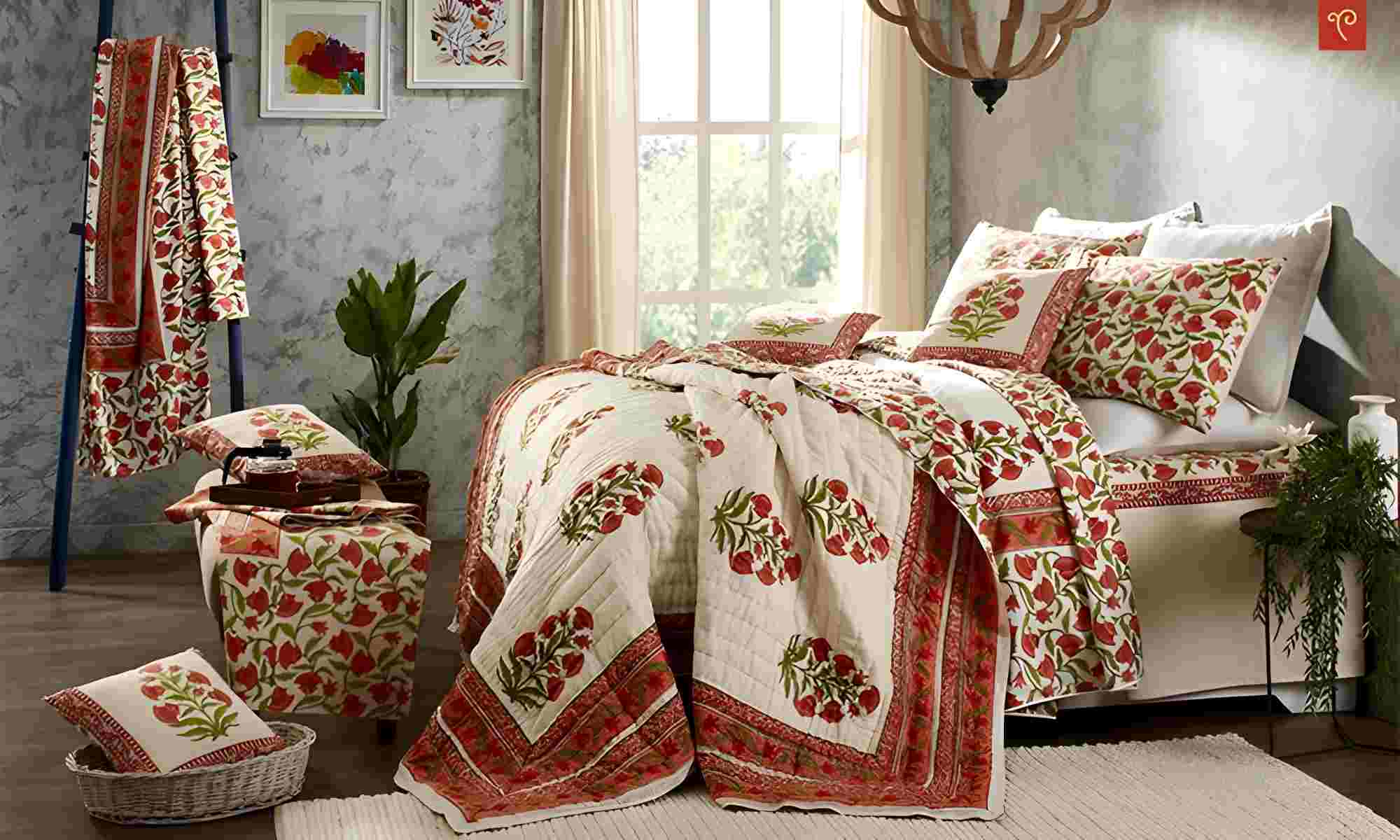As winter approaches, the quest for a cozy and comfortable sleep becomes paramount. Choosing the right bedding to endure the chilly nights is not just about aesthetics; it’s about understanding the fundamentals of fabric, warmth, and layering. This comprehensive guide will walk you through the essentials of selecting the perfect winter bedding, ensuring your bed is a warm haven.
Table of Contents
1. Understanding Bedding Thickness and Thread Count
Thread Count
Thread count plays a significant role in determining the warmth of your bedding. A higher thread count means a tighter weave, which is excellent for retaining heat in winter. This makes higher thread count sheets a preferred choice for those seeking extra warmth. Conversely, a lower thread count offers a looser weave, which is beneficial for hot sleepers, as it allows more breathability. Understanding your personal warmth and breathability needs is crucial in selecting the right thread count for your winter bedding.
Opting for the Right Thickness
In colder months, the thickness of your bedding plays a crucial role in insulation. Flannel sheets, known for their warmth, are measured in grams per square meter (GSM) instead of thread count. A flannel sheet with a GSM of 170 or higher provides excellent warmth.
2. Essentials for Winter Bedding
 Duvet Covers
Duvet Covers
Duvet covers are not just essential in trapping heat but are also the key players in your bedding ensemble for winter. When selecting duvet covers, opt for materials like Egyptian cotton or silk, which provide warmth without creating excessive bulk. These fabrics are highly breathable, ensuring a comfortable sleep without overheating. Furthermore, they serve as a protective layer for your duvet, safeguarding it against dust, spills, and wear, thus significantly extending the life and quality of your duet.
Bedspreads and Quilts
The integration of bedspreads and quilts into your bedding is not just about warmth; it’s a statement of style and comfort. Opt for wool or fleece bedspreads, which are exceptionally proficient in retaining heat and providing a cozy layer against the winter chill. Quilts, on the other hand, offer versatility with their varied thicknesses, allowing you to choose the perfect level of warmth based on the severity of the cold. Their unique designs and patterns also contribute to the overall aesthetic and thematic expression of your bedroom.
3. Layering Your Bed for Winter
Start with a Warm Foundation
The foundation of a warm winter bed begins with a featherbed or a wool mattress pad. These foundational layers act like a warm embrace against the winter’s chill, offering an initial barrier of insulation from the cold. Particularly, a wool mattress pad not only provides warmth but also comes with the natural ability to regulate body temperature. This means it helps in maintaining a consistent warmth throughout the night, preventing the discomfort of overheating, which is crucial for restful sleep in winter. You can find amazing wool and featherbed mattresses with the help of reputed sites like Slumber Search and prepare a cozy haven for yourself during the chilly winters.
The Base Layer
After setting the foundation, the next step is to add either a fitted or a flat sheet directly over it. During winter, it’s advisable to choose sheets made from flannel or brushed cotton, as these materials excel in retaining heat. Their plush, soft texture adds an extra layer of comfort, making your bed not just warm but also irresistibly cozy, inviting you into a restful embrace after a long day.
Middle Layer
The middle layer of your winter bedding is crucial for adjustable warmth. Start with a warm blanket, preferably made of wool or fleece, known for its excellent heat-retention properties. This layer works in tandem with the base sheet to trap body heat. Following the blanket, add a thick comforter or duvet. Opting for down or a high-quality down-alternative filling ensures efficient heat-trapping without adding undue weight, thus creating a cloud-like feel that’s both warm and lightweight.
Top It Off
To complete the layering, crown your bed with a beautiful quilt. This top layer serves more than just a functional purpose; it is a canvas for personal expression. Quilts come in a myriad of materials, patterns, and designs, enabling you to choose one that not only complements your bedroom decor but also reflects your personal style. This layer, while adding to the warmth, brings an aesthetic finishing touch to your bed, making it a centerpiece of comfort and style in your winter bedroom.
4. Additional Tips for a Warm and Comfortable Bed
When selecting the best bedding for winter, it’s crucial to balance coziness with breathability to ensure a comfortable sleep experience, regardless of how cold it gets outside. Here are a few tips and aspects to look out for when choosing winter bedding:
Fiber Type
Opting for pure cotton or cotton blends is a smart choice for winter bedding. These materials offer the best of both worlds: they provide the necessary warmth to fend off the chill, yet remain breathable, preventing any overheating during the night. This balance is essential for uninterrupted sleep and comfort, making these fibers a go-to choice for those seeking a cozy yet breathable bedding option.
Fabric or Material Type
The choice of fabric is pivotal in enhancing your winter sleep experience. Brushed-soft flannel is renowned for its ability to retain heat, making it an ideal choice for those who need extra warmth. Buttery-smooth sateen, on the other hand, offers a luxuriously soft feel while also providing substantial warmth. For those who prefer a more casual and snugger feel, T-shirt cozy jersey-knit sheets mimic the comfort of your favorite tee, providing a warm embrace during colder nights. Each of these fabric types brings its unique comfort and warmth level, catering to diverse preferences and needs.
Down Fill
Down fill, known for its lofty and lightweight characteristics, provides exceptional warmth that is also breathable. This makes down-filled comforters a perfect choice for winter, as they envelop you in warmth without making you feel stifled. The natural properties of down allow for efficient insulation while ensuring adequate air circulation, a key aspect for a comfortable night’s sleep in the colder months.
Down Alternative Fill
For those who prefer down-free options, down alternative fill is an excellent choice. It mimics the loftiness and warmth of natural down but is made from hypoallergenic synthetic materials. This makes it an ideal option for allergy sufferers or those who prefer not to use animal products. Down alternative fill provides the same level of warmth and comfort as traditional down, ensuring that everyone can enjoy a cozy, warm bed in winter without compromising on their preferences or needs.
Conclusion
Selecting the right bedding for winter is a blend of science and art. It’s about understanding the importance of thread count and thickness, choosing the right materials, and mastering the art of layering. With these tips in mind, you can transform your bed into a warm and inviting sanctuary, ensuring a comfortable and rejuvenating sleep during the cold winter months.
Remember, the perfect winter bedding is not just about staying warm; it’s about creating a space where comfort meets style, enhancing your overall sleep experience.
Check out our blog to learn more!


 Duvet Covers
Duvet Covers




